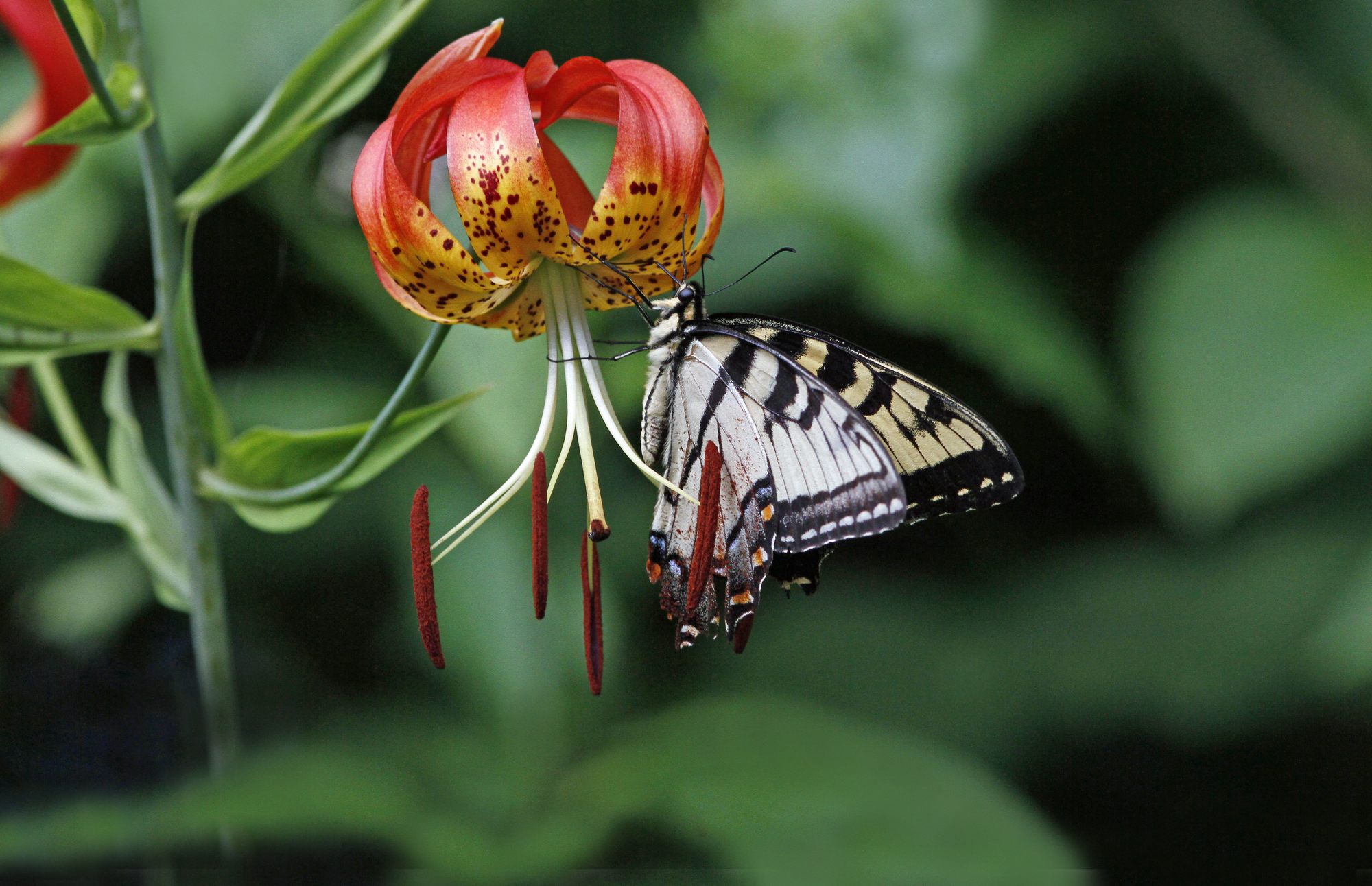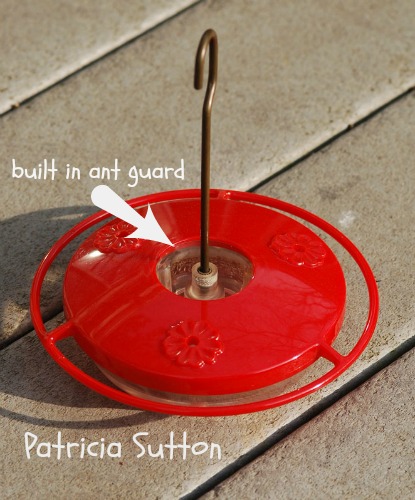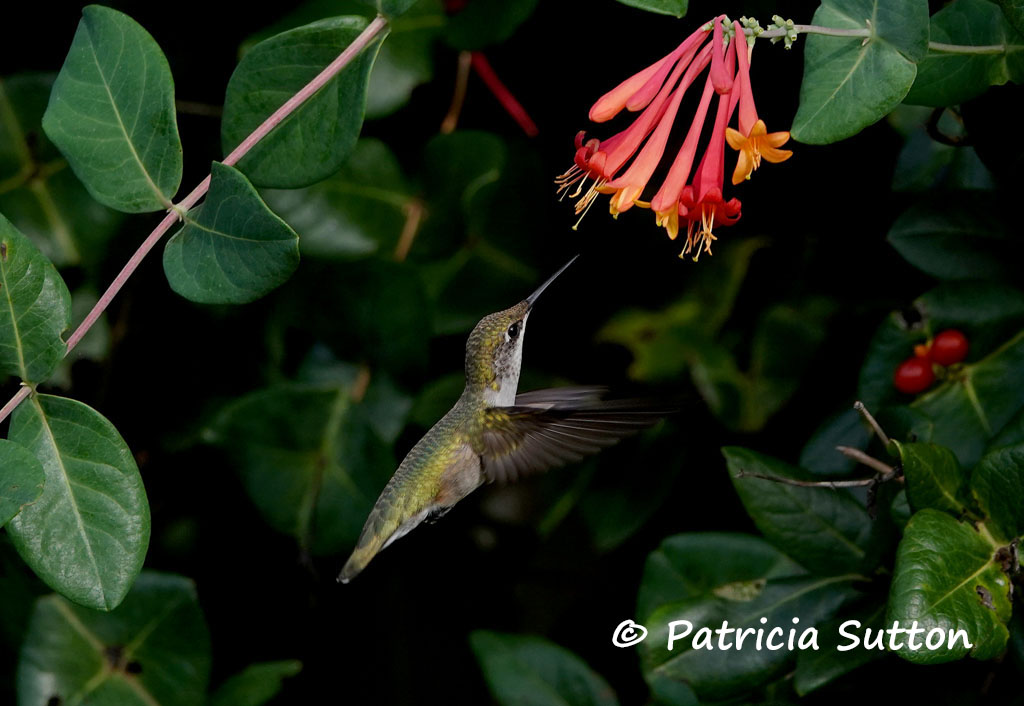
Surging north over a three-month period (from late February through early May), millions of Ruby-throated Hummingbirds depart their winter homes from southern Mexico to Costa Rica and northern Panama. They head north, reach the Yucatan Peninsula in Mexico, and brave the 500 mile-wide Gulf of Mexico water crossing. If weather cooperates and they’re lucky and strong flyers, they reach the Gulf Coast (Texas, Louisiana, Alabama, Florida). Refueling, they then head “back home” to where they were born.
Most years Ruby-throated Hummingbirds reach our southern New Jersey garden around April 20th, but don’t seem to settle in until the end of April or early May. This year (2021), the very first NJ sighting was on April 4. Today the mystery of when they will appear (and when we need to get our feeders hung) has been simplified. Each spring you can monitor Ruby-throated Hummingbird migration north (AND enter your own sightings) on Journey North and on Hummingbird Central. Check these two sites each spring when you begin to wonder when to expect your returning hummingbirds.
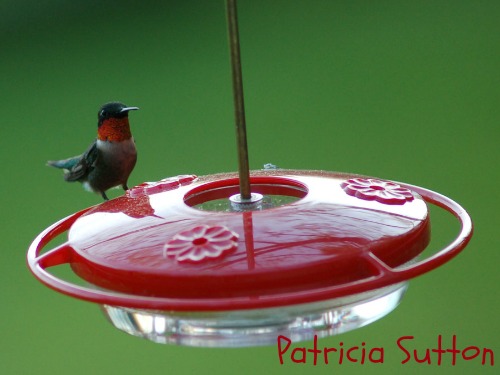
The Importance of Well-maintained Feeders
What many people do not realize is that, if you hope to attract nesting hummingbirds in the spring as they journey north, you need to place well-maintained feeders in your yard. The reason is simple: our gardens are mostly dirt when hummingbirds first arrive in mid-April, with little in the way of blooms and nectar.
Hummingbirds are looking for a secure source of food and will settle in when they find it. Feeders are just that. Of course you want to keep those feeders fresh like flower nectar, so be sure to clean them at least once a week and refill them with fresh solution when temperatures are pleasant in early spring and late fall. During periods of toasty hot weather (which is most of the summer) clean and refill feeders every 2-3 days (as soon as the solution begins to look cloudy). Knowing this, you can clearly see that you don’t want to buy the biggest feeder you can find, since you would be dumping un-used sugar water solution every few days.
The proper solution that is most like nectar in the wild is 1 part granulated white sugar (just like you put in your coffee) and 4 parts water. Oh, and don’t try to make your solution healthier by using raw sugar or honey. Both of these can be deadly to hummingbirds; honey and the iron in raw sugar can lead to a fatal fungus disease. I mix a quart at a time and refrigerate the rest. I own 16 feeders so that I can take 8 clean and freshly refilled feeders out to replace the 8 I’m bringing in to clean.
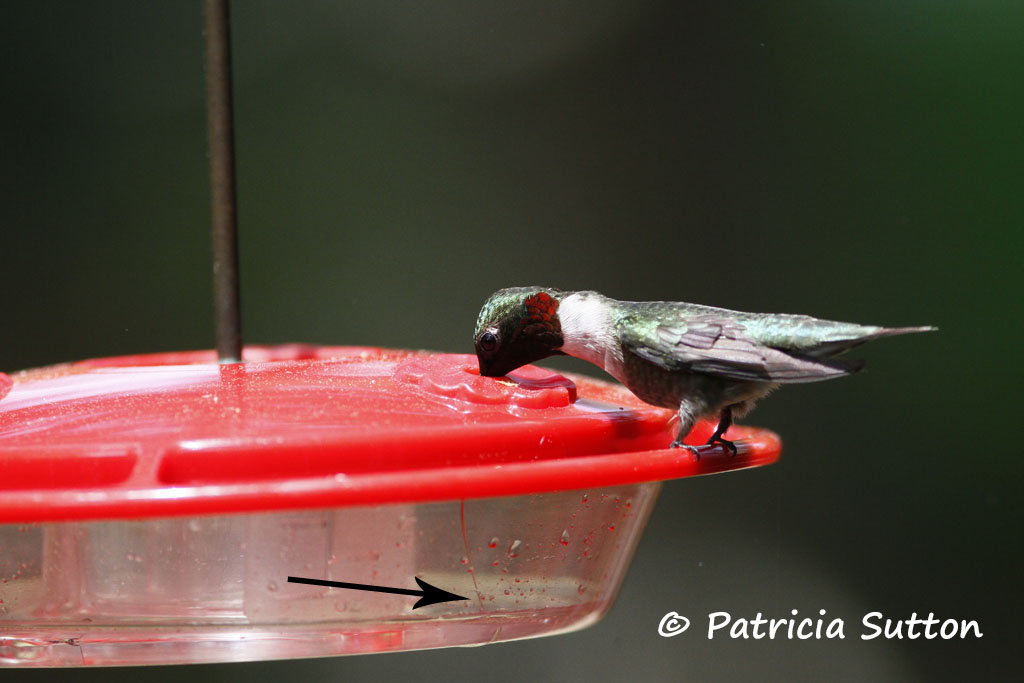
In the early spring and late fall (or any time hummingbird activity is low), I put just 2 ounces into the feeder; a hummingbird’s long tongue can easily reach the solution at the bottom of a feeder. Later in the season, when activity peaks, I’ll fill the feeder to capacity (8 ounces). Sugarcane fields have gobbled up so much important habitat that the last thing I want to do is toss 6-7 ounces of sugar water solution every time I clean and refill a feeder.
My Favorite Hummingbird Feeder
My favorite feeder is the HummZinger mini 8-ounce feeder by Aspects. This feeder is incredibly well thought out (no surprise since Aspects tapped Sheri Williamson, hummingbird expert and author of the Peterson Field Guide to Hummingbirds of North America, as a consultant). This feeder is easy to clean (which is A MUST – ditch your artsy, hard-to-clean feeders), has a built in ant guard (just fill it with water and they must go for a swim to reach the solution), the proper solution is written inside the lid so you can’t forget (emphasizing NOT to use red dye), the design is NOT bee-friendly (bees can not get to the solution because they do not have long bills and tongues), etc.
I place my eight feeders around our one-half acre habitat so that one bossy male can not defend all eight feeders (and flower beds), though he tries. Two hang from our front porch, one from the back porch, one out my office window, one outside our screened porch, one under the Coral Honeysuckle arbor, one at the back of our perennial garden, and one at the back of our woods. With this many options a female has a better chance of setting up a territory of her own around one of the feeders and nesting somewhere near this secure source of food.
One feeder equates to one bossy male. Two feeders placed out of sight of each other may lure in two territorial males. Three feeders scattered around your yard, some in the front yard and some in the backyard, may lure in a third hummingbird, hopefully a female who will chose to nest in your yard. It is great entertainment watching a male try to defend all of your feeders and gardens, but don’t make it too easy for him or he will be your sole hummingbird.
What few realize is that male Ruby-throated Hummingbirds do not share well with others, even their own “mate” and young. Once a male has mated with a female, he’s done — and off looking for the next available female. So, be sure to have plenty of food in the way of feeders and well-crafted gardens blooming from early, early spring right up until frost.
Nectar (and the solution in feeders) is what powers and maintains a hummingbird’s incredibly high metabolism. Nectar is like a candy bar to a hummingbird, but who can live on candy bars alone? Their meat or protein comes from eating tiny, soft-bodied insects and spiders. So, a pollinator garden full of insects is like a supermarket to hungry hummingbirds.
In May
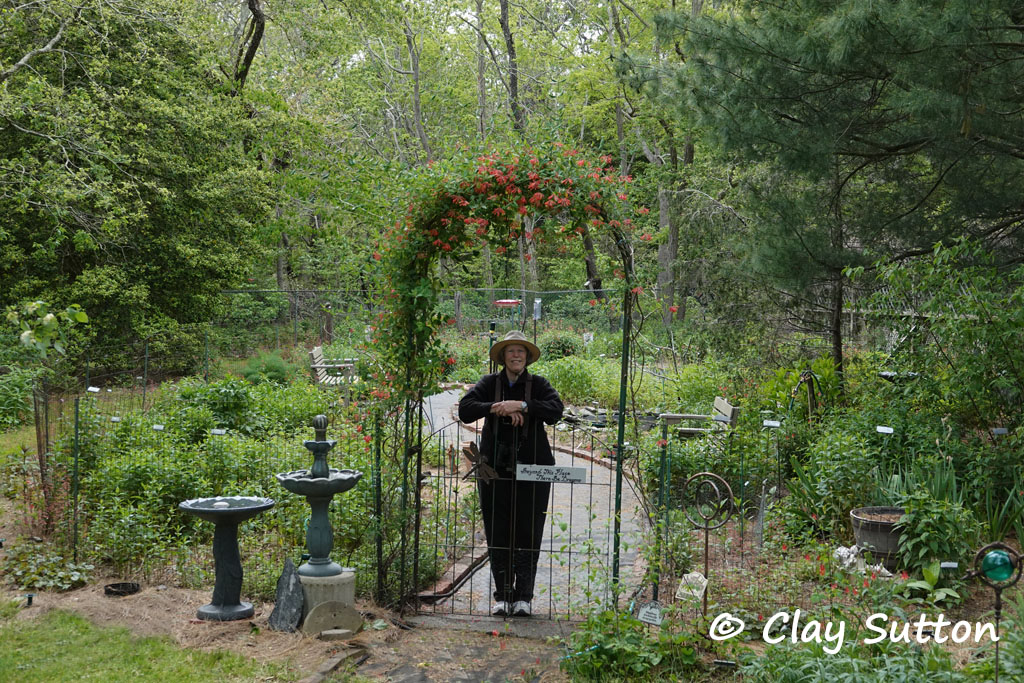
By mid-May, in my South Jersey garden, many spring perennials have kicked into high gear, so feeders are not the only show in town. My arbor of lushly blooming Coral Honeysuckle, Lonicera sempervirens, is a hotbed of activity. It blooms lushly in May then continues to bloom all summer and fall long, until the first frost (with fewer and fewer flowers as the year unfolds).
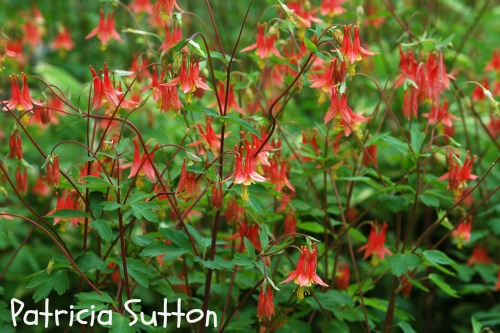 Wild Columbine, Aquilegia canadensis, has wandered all over my garden and woods much to my delight and that of hummingbirds. It is a heavy seed producer, so I collect the seeds once the flower heads dry and scatter them where I want new stands of this hummingbird favorite.
Wild Columbine, Aquilegia canadensis, has wandered all over my garden and woods much to my delight and that of hummingbirds. It is a heavy seed producer, so I collect the seeds once the flower heads dry and scatter them where I want new stands of this hummingbird favorite.
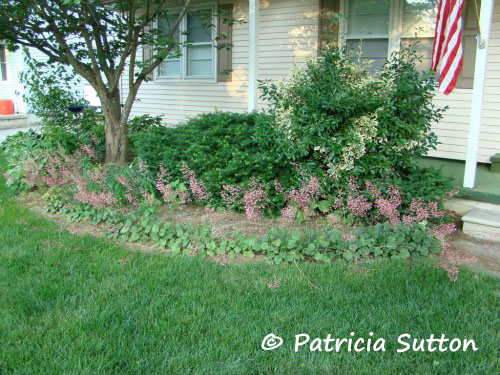 My old-fashioned Coral Bells, Heuchera spp., pull in hummingbirds too.
My old-fashioned Coral Bells, Heuchera spp., pull in hummingbirds too.
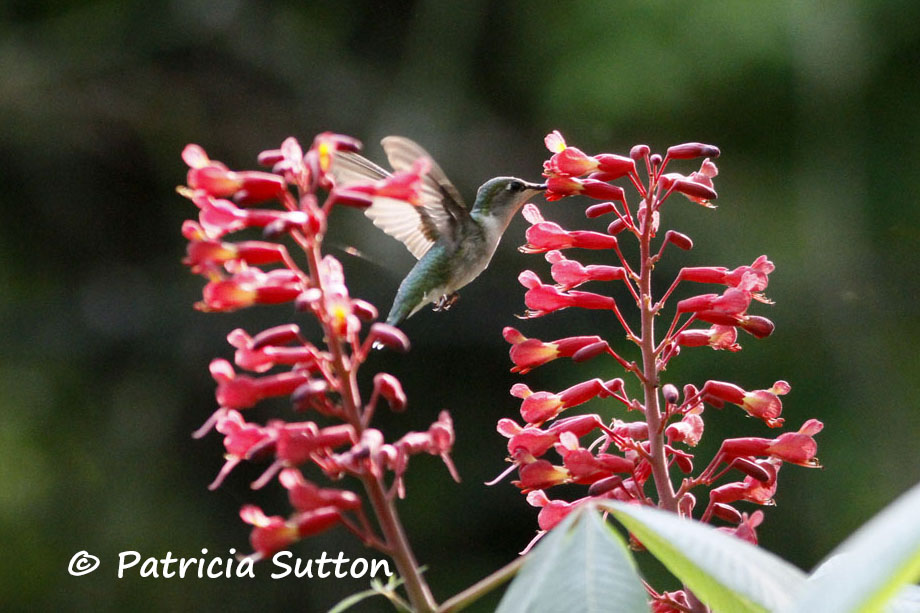 I’ve planted a Red Buckeye, Aesculus pavia, in my woods that the hummingbirds find irresistible.
I’ve planted a Red Buckeye, Aesculus pavia, in my woods that the hummingbirds find irresistible.
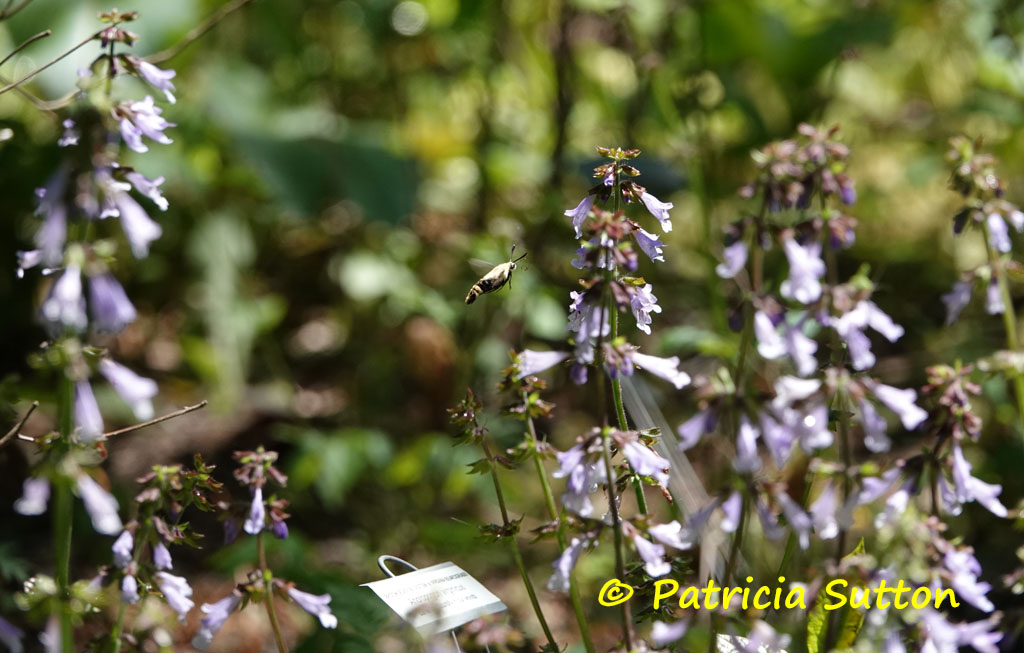 Another hummingbird favorite in the early spring is the shade-loving Lyre-leaved Sage, Salvia lyrata. It can be quite a thug, so be careful to plant it where you’d like it to carpet the understory.
Another hummingbird favorite in the early spring is the shade-loving Lyre-leaved Sage, Salvia lyrata. It can be quite a thug, so be careful to plant it where you’d like it to carpet the understory.
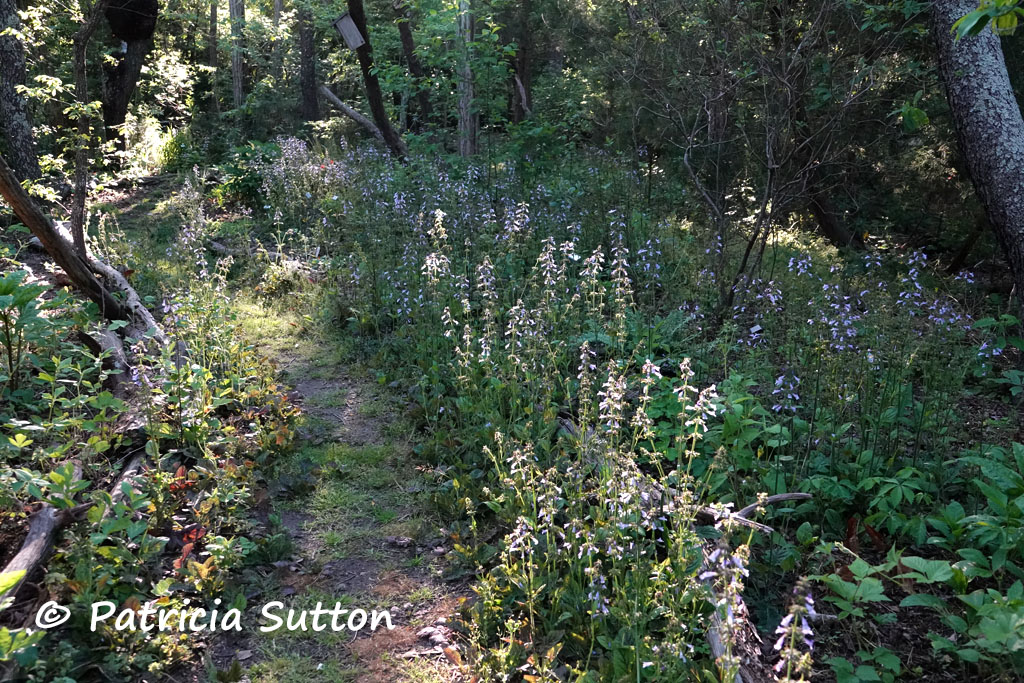 Highbush Blueberries and Azaleas are also good spring nectar plants for Ruby-throated Hummingbirds.
Highbush Blueberries and Azaleas are also good spring nectar plants for Ruby-throated Hummingbirds.
In June
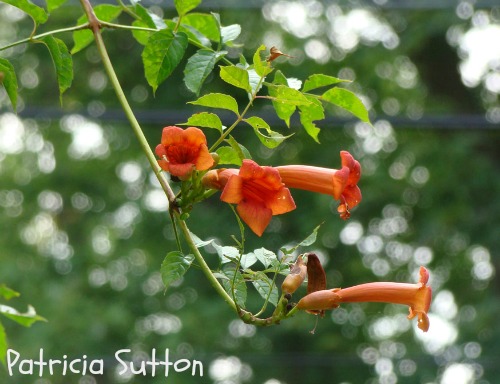
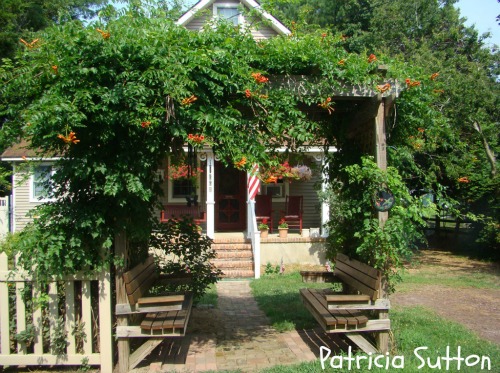
In mid-June through July, Trumpet Creeper (Campsis radicans), Bee Balm (Monarda didyma), Wild Bergamot (Monarda fistulosa), Foxglove Beardtongue (Penstemon digitalis), Garden Phlox (Phlox paniculata), and Blazing Star (Liatris spicata) all kick in as top hummingbird nectar plants in my garden. Trumpet Creeper, a native vine, can be trained up a dead tree or over a sturdy arbor. There’s nothing more fun than sitting under that arbor and blazing away with a camera as hummingbirds feed and perch, feed and perch, over my head.
 Bee Balm is the plant that led me to wildlife gardening forty plus years ago now. It pulls in EVERYTHING, from hungry hummingbirds to hummingbird moths, butterflies, a multitude of bees and wasps, the works! Bee Balm or Monarda is in the mint family and will spread. If you have a patch, share some with a new wildlife gardener and help get them hooked.
Bee Balm is the plant that led me to wildlife gardening forty plus years ago now. It pulls in EVERYTHING, from hungry hummingbirds to hummingbird moths, butterflies, a multitude of bees and wasps, the works! Bee Balm or Monarda is in the mint family and will spread. If you have a patch, share some with a new wildlife gardener and help get them hooked.
With hummingbirds, there is so much to share about these little bundles of energy that I’ll return with additional information in a segment covering mid-summer to late fall.
We hate to see them go, but let’s not think about that right now. After all it is spring and we have a solid 5 months of hummingbird madness to enjoy.
Happy gardening and happy hummers,
Pat
